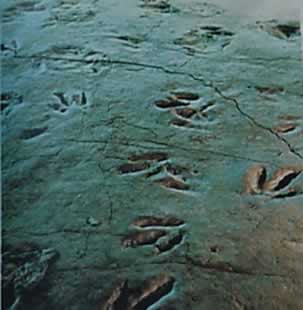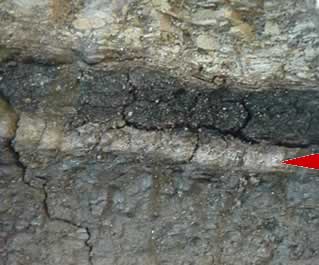|
EON
|
ERA
|
PERIOD
|
EPOCH
|
|
Phanerozoic
|
Cenozoic
|
Quaternary 1.6 million years ago |
Holocene Pleistocene |
| Tertiary 1- 66 million years ago |
Pliocene Miocene Oligocene Eocene Paleocene |
||
|
Mesozoic
|
Cretaceous 66-138 million years ago |
Late Early |
|
| Jurassic 138-205 million years ago |
Late Middle Early |
||
| Triassic 205-240 million years ago |
Late Early |
||
|
Paleozoic
|
Permian 240-290 million years ago |
Late Early |
|
| Pennsylvania 290-330 million years ago |
Late Middle Early |
||
| Mississippian 330-360 million years ago |
Late Early |
||
| Devonian 360-410 million years ago |
Late Middle Early |
||
| Silurian 410-435 million years ago |
Late Middle Early |
||
| Ordovician 435-500 million years ago |
Late Middle Early |
||
| Cambrian 500-570 million years ago |
Late Middle Early |
||
|
Proterozoic
|
Late
Proterozoic
Middle Proterozoic Early Proterozoic |
2.5 billion years ago | |
|
Archean
|
Late
Archean
Middle Archean Early Archean |
3.8 billion years ago |
Long before carbon or uranium
dating geologists expressed Earth's geological time scale as a sequence
of distinct stages characterized by the development of plant and animal
life or geological activity.
This time scale was developed over many years as new fossil remains were
uncovered and studied. The length of each distinct stage did not become
apparent until the advent of radioactive dating.
So, this geological time scale
is separated into eons, which are subdivided into eras,
which are subdivided into periods which in turn are subdivided
into epochs. The names of these subdivisions follow a pattern that
may not appear obvious at first.
For example the word:
- zoic
means animal life;
- phanero means obvious or visible;
- paleo means ancient;
- meso means middle;
- ceno means recent;
- protero means first or early.
Knowing the meanings of these words we can decipher the meaning of each
subdivision.
For example:
- Proterozoic contains protero
and zoic. This means early life and as such this period was
characterized by the advent of microscopic life forms such algae, bacteria
and simple worm like animals.
- Phanerozoic contains phanero and zoic. This means obvious
life and so during this period of time complex organisms such as dinosaurs,
mammals and trees evolved.
Was life present during these three eras?
2) In which era would we expect to find the most advanced, complex creatures?
3) In which era woud the life form be expected to be in its simplest form?

5) The tracks shown on the left were most likely to have been formed during which eon?
6) The uranium bearing rock
sample containing the foot prints on the left was analyzed for lead and
uranium isotopes. It was found that uranium-238 and lead-206 isotopes
were present. If the half-life of uranium-238 is 4.5 billion years what
is the likely ratio of uranium-238 to lead-206 isotopes?
a) uranium-238:lead-206 = 1:9
b) uranium-238:lead-206 = 1:1
c) uranium-238:lead-206 = 19:1
d) uranium-238:lead-206 = 4:1
Explain your answer.

7) The red arrow on the left
shows a thin layer of clay thought to have been deposited after a large
impact that ended the rein of the dinosaurs late in the cretaceous period.
The rock just below the layer was analyzed for uranium-238 and lead-206.
What should the ratio of uranium-238 to lead-206 be?
a) uranium-238:lead-206
= 1:9
b) uranium-238:lead-206 = 1:1
c) uranium-238:lead-206 = 19:1
d) uranium-238:lead-206 = 145:2
Explain your answer.